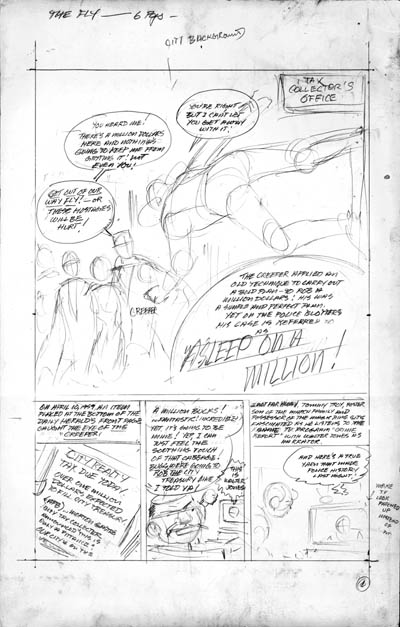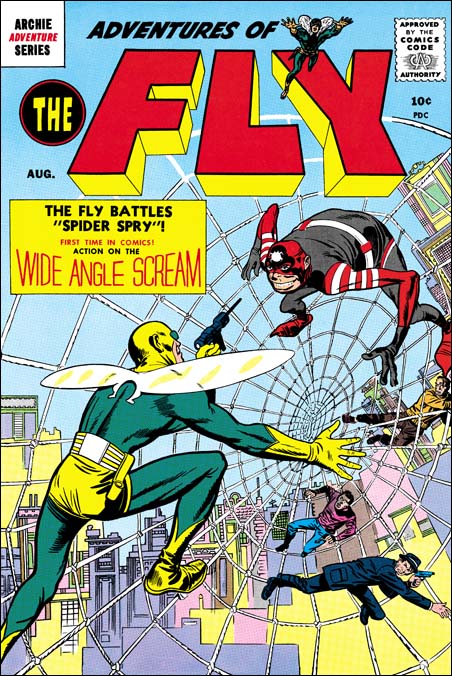
The Adventures of the Fly #1 (August 1959) by Jack Kirby
Previously in the End of Simon and Kirby we saw that after the failure of Mainline and with a decrease in work for Prize, Jack Kirby turned to working as a freelance artist. Joe Simon continued to get Harvey comics to publish various S&K projects but none of them became hits.
After the end of Alarming Tales and Race For The Moon in November 1958, Harvey comics was probably reluctant to try any other new ideas from Joe Simon, at least right away. But that did not stop Joe from coming up with them. As Simon tells the story in The Comic Book Makers, in 1953 C. C. Beck wanted to get back into the comic business and asked Joe to come up with an idea. From this came a character called the Silver Spider and Beck would do a rough drawing of a story that was scripted by Joe’s brother-in-law Jack Oleck. This was presented to Harvey without generating any interest. Years later when Goldwater from Archie Comics wanted a couple of superhero comics, Joe remembered the Silver Spider concept, retrieved the art from Harvey, and rethought the idea. Joe sent Beck’s Silver Spider art to Jack Kirby and ask Jack to update it as the Fly. Joe’s story makes sense to me. Had the Silver Spider originally been a S&K concept, Kirby would certainly have done the original story, not Beck. But it would seem that Jack came up with the costume for the Fly, basing it in part on a unused S&K concept called the Night Stalker.

The Double Life Of Private Strong #1 (June 1959) by Jack Kirby
Joe took this concept of the Fly to Archie Comics and added to it a proposal to re-do an old superhero called the Shield. The original Shield was the first patriotic hero from before when the company was referred to as MJL. The new Shield would be given great powers and would have a secret identity as a soldier, sort of combining the original Shield with Captain America and Superman. Well Archie must have liked Joe’s ideas because The Double Life of Private Strong would come out in June 1959 and the Adventures of the Fly would follow in August. As Joe tells it, a threat of a lawsuit by DC put an end the new improved Shield with issue #2, also released in August.
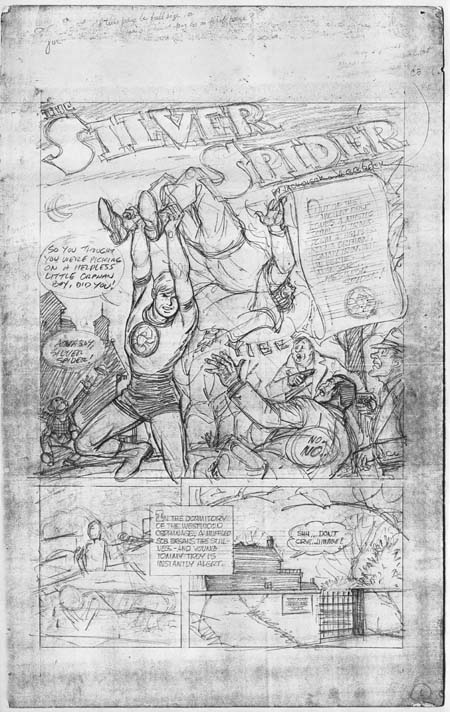
Silver Spider (1953) page 1 by C. C. Beck
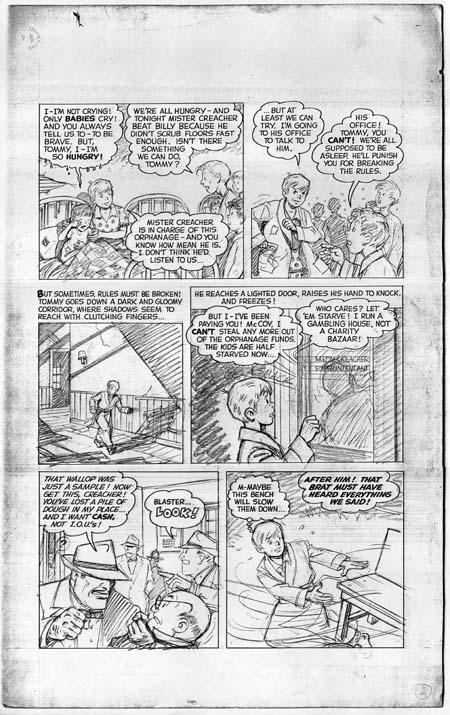
Silver Spider (1953) page 2 by C. C. Beck
The Oleck/Beck story was pretty much retained when Kirby updated it for the Fly. The main difference is that Jack replaced the original genie with an emissary from the Fly People. Kirby did introduce a discrepancy, in both versions the superintendent of the orphans is shown as under threat by mobsters because of a gambling dept. But in Jack’s version he is latter presented receiving his share of the of the orphanage racket and thus acting as one of the gang. This was probably done to streamline the story. Beck’s version required the Fly to first confront the superintendent before proceeding to the gangsters. While Jack made one fight by making the superintendent a gang member.
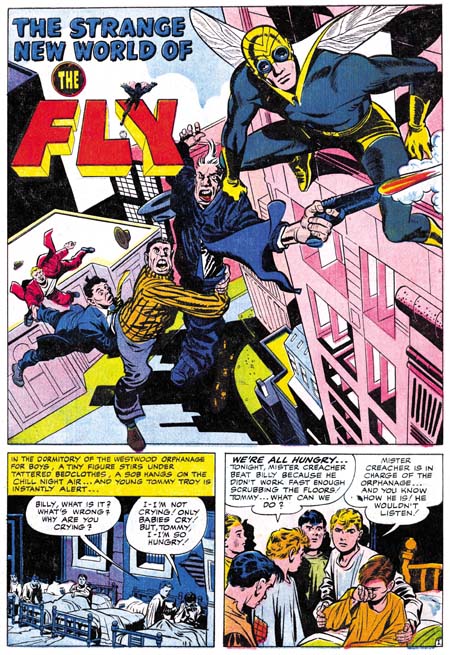
The Adventures of the Fly #1 (August 1959) “The Strange World of the Fly” page 1 by Jack Kirby
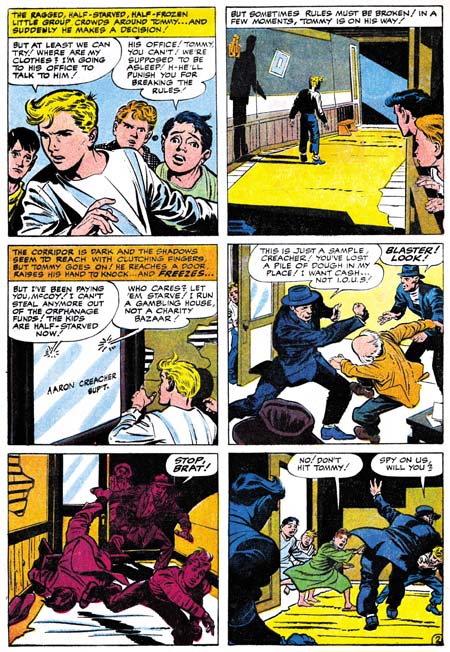
The Adventures of the Fly #1 (August 1959) “The Strange World of the Fly” page 2 by Jack Kirby
Although Kirby came up with the how the Fly should look like, Simon really was the driving force behind this new character. In previous new titles Kirby would generally supply the art, at least for the initial issues. But with the Fly Simon would turn to a number of artists to create the contents; Jack Davis, George Tuska, Al Williamson. He even got Carl Burgos to do layouts. Joe once showed me a list someone made of what artists did what. Unfortunately he followed this by saying that the list maker got it all wrong. Frankly I am not even going to try, with so many hands involved I am not always sure I can always pick out the work that Kirby did. Was Jack too busy with work at Atlas, or did Joe decide he might be better off using different artists? Unlike the Fly, Private Strong did get the Kirby treatment. At least for the first issue, which is all Jack. But the second only has one Kirby story.
Joe still has a lot of the original art and it is interesting as it shows Joe’s working practices at that time. For some of the stories much of the pages are cut and paste jobs. I do not know whether Joe was condensing, rearranging or adding to the story. But a fair portion of these comics went through this special type of editing. Joe would also construct some of the covers in a similar way. He would even swipe Captain America from a 1941 cover (Captain America #7) to make the Fly for the cover to issue #2. As far as I am concerned all the prior projects that came out after Mainline’s failure were Simon and Kirby productions of some kind. But the Fly and the Shields were not, the Simon and Kirby collaboration was over. With the Fly Joe finally seemed to have at least a limited success. But apparently Archie Comics was not completely satisfied and felt it could be better. So after just four issues (January 1960) Simon was out and a new crew took over the Fly.
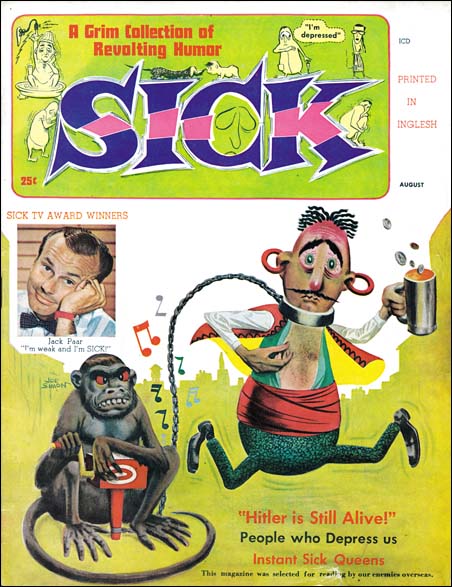
Sick #1 (August 1960) by Joe Simon
On the face of it Teddy Epstein’s new idea just does not sound like a great one. I am amazed that after so many years and so many clones that Prize would want to try publishing yet another copy of Mad. Even more unbelievable is that fact that it succeeded! At lease one reason for that success was Prize turned to Joe Simon to produce it. Joe’s talent for visual humor would now be unleashed in Sick. Of course another reason for the success of Sick was the wonderful artists that Joe would hire. In a way even Jack Kirby showed up when Simon reworked some Fighting American art for a cover (Sick #42 February 1966). Joe would be editor of Sick from until 1968 and would still provide art for it for some time afterwards. During this period Joe Simon would work on other projects, primarily for Harvey Comics. At some point Joe would enter advertisement, but I still do not have a good handle on when that was.
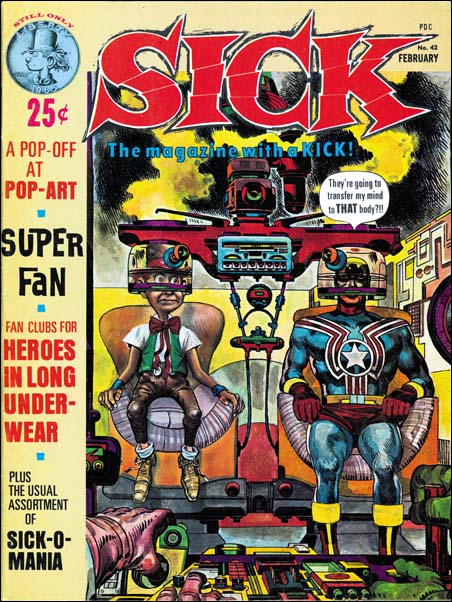
Sick #42 (February 1966) by Jack Kirby altered by Joe Simon
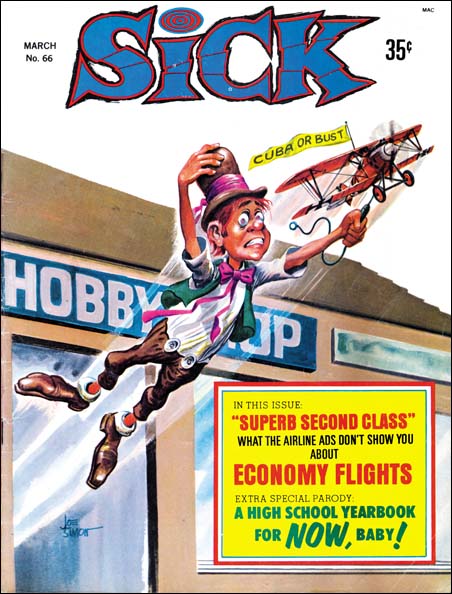
Sick #66 (March 1969) by Joe Simon



